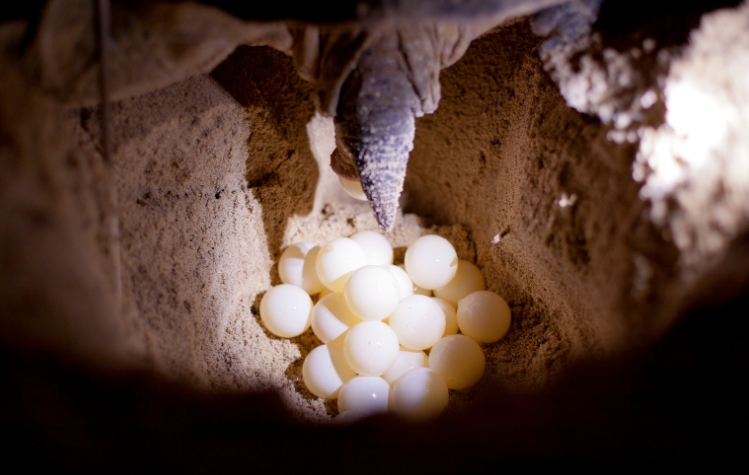When Do Turtles Lay Eggs? Discover Breeding Seasons & Signs
Understanding “when do turtles lay eggs?” is essential whether you’re a conservationist, a pet owner, or a wildlife enthusiast. Knowing the specific months, the cues for egg-laying, and how to prepare can make a significant difference in the success of your efforts. This comprehensive guide will walk you through the crucial aspects of turtle egg-laying.
When Do Turtles Typically Lay Eggs?
Turtles, much like other reptiles, have specific times and conditions that trigger their egg-laying behaviors. Generally, the timing varies by species, environmental conditions, and geographic location. As an overarching rule, many turtle species lay eggs during warmer months, aligning with optimal conditions for offspring survival.
What Are the Breeding Seasons for Different Turtle Species?
Sea Turtles: Seasons vary depending on the species. For example, the Green Sea Turtle typically nests from June to September, while Loggerhead Turtles may lay eggs between March and October.
Freshwater Turtles: These species often align their egg-laying with the spring and summer months. Painted Turtles, common in North America, lay eggs from May to July.
Box Turtles: North American Box Turtles lay their eggs between May and July, synchronized with the warmer seasons to ensure proper incubation.
How Do Environmental Factors Influence Egg Laying?
Environmental conditions play a pivotal role in the egg-laying process for turtles. Here are some key factors:
Temperature: Warmth is critical for egg development and incubation. Turtles often lay eggs when the ground is warm enough to incubate them properly.
Humidity: Humidity levels can influence the moisture content in the soil, which is essential for both egg development and nesting behavior.
Photoperiod: The length of daylight can trigger breeding behaviors in many turtle species. Longer days often signal breeding seasons for various types of turtles.
Food Availability: Abundant food supplies can enhance reproductive readiness. Turtles are more likely to lay eggs when their nutritional needs are thoroughly met.
Predator Presence: The presence of predators can influence nesting location and timing. Turtles may opt for safer, albeit less optimal, nesting sites if they sense danger.

How Can You Tell if a Turtle Is Ready to Lay Eggs?
Identifying when a turtle is ready to lay eggs involves observing both behavioral changes and physical signs. This can help pet owners and conservationists prepare adequately.
What Behavioral Changes Indicate Egg Laying?
Restlessness: A female turtle may display signs of increased activity, moving around more than usual and exploring potential nesting areas.
Digging: One of the clear signs is the act of digging. The turtle may start digging multiple test holes before settling on a nesting spot.
Reduced Appetite: Turtles may eat less as they focus their energy on finding a nesting site and preparing for egg laying.
Frequent Basking: Increased basking can indicate hormonal changes and prepare a turtle physically for egg-laying.
Change in Social Behavior: If housed with others, a turtle might become more solitary or exhibit signs of aggression as it focuses on nesting.
What Physical Signs Should You Look For?
Swollen Abdomen: When a turtle is gravid (carrying eggs), its abdomen will appear swollen, especially near the back legs.
Engorged Cloaca: The cloaca, or the turtle’s posterior opening, might appear more prominent and engorged.
Firm Belly: Gentle palpation of the turtle’s abdomen may reveal the presence of eggs.
Frequent Visits to Water: Turtles might visit water more often to stay hydrated and maintain optimal physical condition for laying.
How to Prepare for Turtle Egg Laying
Once you’ve identified that a turtle is ready to lay eggs, it’s important to create an environment conducive to successful nesting.
What Is the Best Nesting Environment for Turtles?
Providing an ideal environment can increase the success rate of egg hatching:
Soft, Well-Draining Soil: Opt for sandy or loamy soil that turtles can dig easily. Ensure it’s not too compacted to facilitate burrow creation.
Security: Choose a quiet, low-traffic area. Turtles prefer secluded spots to limit stress.
Correct Temperature: Maintain soil temperatures within the optimal range for the species in question. Generally, this is between 77°F and 89°F for many turtle types.
Moisture Content: Slightly moist soil is essential. It shouldn’t be waterlogged but should hold enough moisture to aid in egg development.
Sun Exposure: Ensure the nesting site gets enough sunlight, as it’s crucial for incubating the eggs.
How Should You Set Up a Nesting Site?
Creating a nesting site requires attention to detail:
Select the Right Spot: Choose a location with appropriate soil and environmental conditions as noted.
Excavate a Nesting Hollow: If you’re assisting a pet turtle, dig a nesting hollow about the size of the turtle’s body to help guide her.
Maintain Soil Conditions: Monitor and adjust the soil’s moisture and temperature regularly. Use thermometers and hygrometers for accurate readings.
Provide a Safety Perimeter: Use small fences or barriers to protect the nesting site from predators without trapping the turtle inside.
Conclusion
Understanding “when do turtles lay eggs and how?” is crucial for anyone involved in their care or conservation. By paying close attention to environmental cues, behavioral changes, and physical signs, you can create an optimal nesting environment. Whether you’re a pet owner or a wildlife enthusiast, these insights can help you ensure that turtle eggs are laid and incubated successfully.
FAQs
What months do turtles lay eggs?
Turtles typically lay eggs during warmer months. The specific months vary by species, but generally fall between March and September.
How do I know if my turtle has laid eggs?
Check the nesting site for signs of digging and egg deposition. If the hole is covered, it indicates that the eggs were laid.
What time of day do turtles lay eggs?
Most turtles prefer to lay eggs at night or during early morning hours. The reduced risk of predation during these times makes it safer for them to nest.
